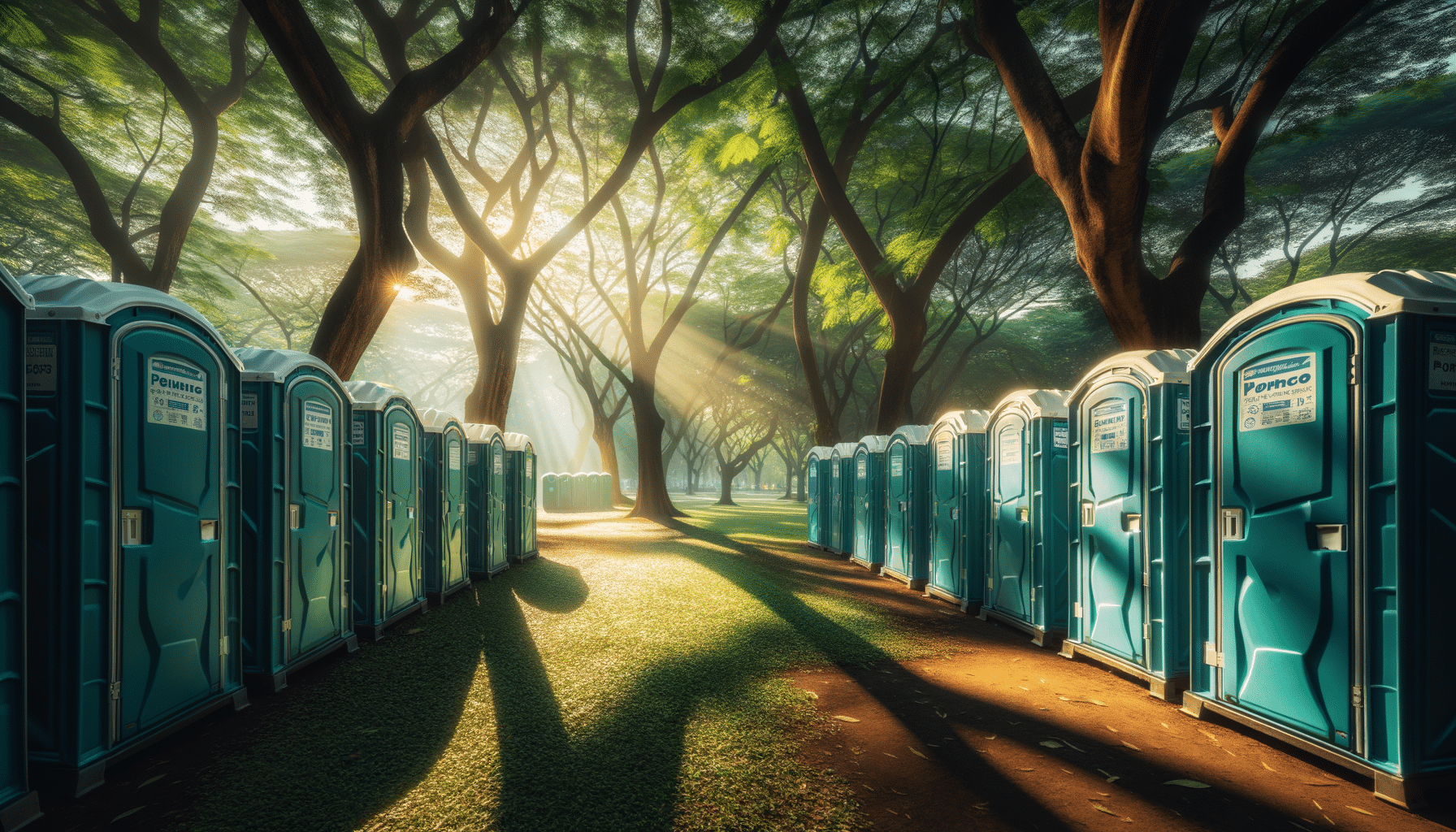
Exploring the World of Portable Toilets: Convenience and Necessity
The Evolution and Importance of Portable Toilets
Portable toilets have come a long way since their inception, evolving to meet the diverse needs of users across different environments. Initially designed as a temporary solution for sanitation, they have become an essential part of modern infrastructure, particularly in areas lacking permanent facilities. With increasing awareness about hygiene and sanitation, the demand for portable toilets has surged, making them a common sight at events, construction sites, and even in emergency situations.
The importance of portable toilets cannot be overstated. They provide a hygienic and convenient solution for managing human waste, especially in outdoor settings where traditional restrooms are unavailable. This is crucial in maintaining public health standards and preventing the spread of diseases. Moreover, they play a vital role in ensuring the comfort and satisfaction of attendees at large gatherings, such as music festivals, sports events, and outdoor weddings, where the absence of adequate sanitation facilities could lead to negative experiences.
In the construction industry, portable toilets are indispensable. They not only comply with health and safety regulations but also contribute to the productivity of workers by minimizing the time spent searching for restroom facilities. As a result, businesses can maintain a more efficient workflow, ultimately benefiting their bottom line.
Types of Portable Toilets and Their Features
Portable toilets come in various types, each designed to cater to specific needs and preferences. The most common type is the standard portable toilet, which is a self-contained unit featuring a waste holding tank. These are frequently used at construction sites and public events due to their simplicity and ease of maintenance.
For those seeking a more comfortable experience, luxury portable toilets are available. These units often include additional amenities, such as handwashing stations, mirrors, and even climate control features. They are popular at high-end events where maintaining a certain level of comfort and sophistication is essential.
Another innovative option is the composting portable toilet, which uses natural processes to break down waste into compost. These are environmentally friendly and ideal for remote locations where waste disposal facilities are limited. Additionally, some portable toilets are specifically designed for accessibility, featuring ramps and spacious interiors to accommodate individuals with mobility challenges.
Key features of portable toilets include:
- Durable construction to withstand outdoor conditions
- Ventilation systems to reduce odors
- Non-slip flooring for safety
- Lockable doors for privacy
Environmental Impact and Sustainable Solutions
As the world becomes more environmentally conscious, the impact of portable toilets on the environment has come under scrutiny. Traditional portable toilets rely on chemicals to sanitize waste, which can be harmful if not disposed of properly. However, advancements in technology have led to the development of more sustainable options.
Composting portable toilets, for instance, offer a greener alternative by utilizing natural processes to decompose waste. This not only reduces the reliance on chemical treatments but also minimizes the environmental footprint by producing usable compost. Additionally, some manufacturers are exploring the use of biodegradable materials in the construction of portable toilets, further enhancing their sustainability.
Waterless portable toilets are another eco-friendly option, designed to conserve water by using alternative methods to manage waste. These toilets are particularly beneficial in areas facing water scarcity, providing a practical solution without compromising on sanitation standards.
Efforts to improve the sustainability of portable toilets are crucial in reducing their environmental impact and ensuring they remain a viable option for future generations.
Challenges and Considerations in Portable Toilet Usage
Despite their numerous advantages, the use of portable toilets comes with its own set of challenges and considerations. One of the primary concerns is the regular maintenance required to ensure hygiene and functionality. This involves routine cleaning and waste disposal, which can be logistically challenging in remote or high-traffic areas.
Another challenge is the perception of portable toilets as being less sanitary compared to traditional restrooms. This stigma can deter people from using them, particularly in settings where comfort and cleanliness are prioritized. To address this, companies are investing in better designs and features to enhance user experience and change public perceptions.
Furthermore, the placement and accessibility of portable toilets are critical factors that can impact their effectiveness. Ensuring that they are strategically located and easily accessible can significantly improve user satisfaction and convenience.
Addressing these challenges requires a combination of innovative solutions, effective management, and public education to highlight the benefits and importance of portable toilets in various contexts.
The Future of Portable Toilets
The future of portable toilets looks promising, with ongoing innovations aimed at improving their functionality, sustainability, and user experience. Technological advancements are paving the way for smart portable toilets equipped with sensors to monitor usage, cleanliness, and maintenance needs. This data-driven approach can optimize maintenance schedules and enhance efficiency.
Moreover, the integration of renewable energy sources, such as solar panels, into portable toilets is an exciting development. This not only reduces their carbon footprint but also provides an independent energy source for powering additional features like lighting and ventilation.
The focus on sustainability is likely to drive further innovation in the design and materials used in portable toilets. As the demand for environmentally friendly solutions grows, we can expect to see more composting and waterless options becoming mainstream.
In conclusion, portable toilets are set to remain an integral part of our infrastructure, adapting to meet the evolving needs of society while embracing sustainable practices.


